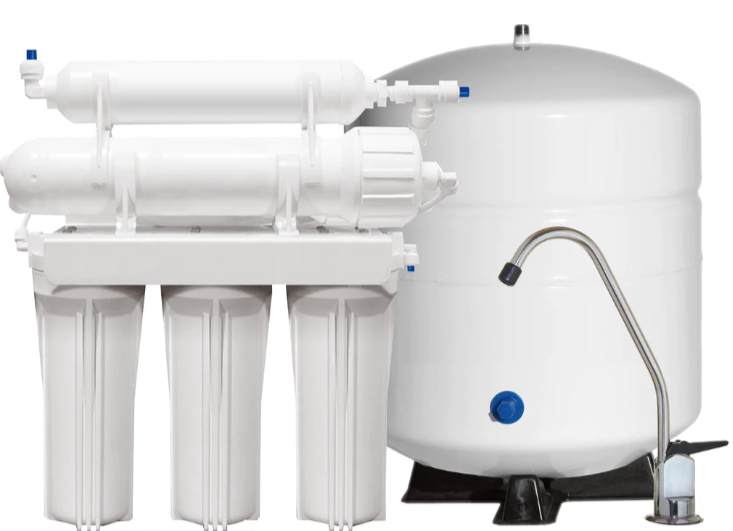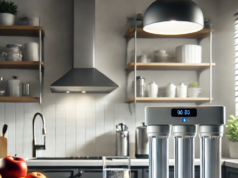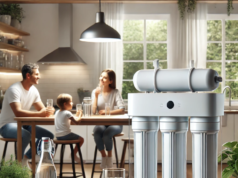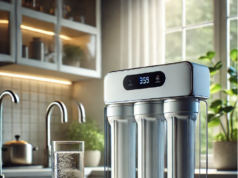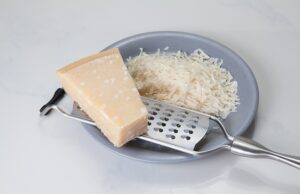Contents
From Industrial to Home Use: The Evolution of Reverse Osmosis Technology
The reverse osmosis technology has come a long way since its inception as an industrial process. Initially, it was used for desalination of seawater and water treatment for industries. However, with technological advancements, reverse osmosis systems became more compact and affordable, making them ideal for home use.
Reverse Osmosis Technology is a water purification process that removes impurities and contaminants from water by applying pressure to force water molecules through a semi-permeable membrane. As a result, it produces clean drinking water that is safe for consumption.
In the past, reverse osmosis technology was mainly used in large-scale applications such as desalination plants and water treatment facilities. However, with the increasing need for safe and clean drinking water, the technology has been scaled down to suit individual homes.
Home reverse osmosis systems have become increasingly popular due to their ability to remove up to 99% of contaminants and impurities from tap water. With improved technology, home systems are now more energy-efficient and require less maintenance, making them a cost-effective solution for households.
Overall, the evolution of reverse osmosis technology has transformed it from an industrial process to a widely recognized home water purification system that provides clean and safe drinking water for households.
💧 = Use the coupon code SALEG3P800 to save $150 OFF on the 800GPD Tankless RO System with UV Sterilizing Light – Waterdrop G3P800 = 💧
What is Reverse Osmosis?
Reverse osmosis is a water purification process that uses a semi-permeable membrane to remove larger particles, ions, and other impurities from water. It is a popular method for producing clean drinking water because of its efficiency and reliability.
Industrial Applications of Reverse Osmosis
Reverse osmosis technology was initially developed for industrial applications such as desalination, removing ions from water used in the production of pharmaceuticals and electronics, and treating wastewater. The technology was first used commercially in the 1970s and has since become a common method for water treatment in various industries.
Introduction of Home Reverse Osmosis Units
As the benefits of reverse osmosis became clear, the technology was eventually adapted for household use. The first home reverse osmosis units were introduced in the 1980s, and they quickly became popular due to the growing concern over the quality of tap water.
Recent Technological Advancements in Reverse Osmosis
In recent years, reverse osmosis technology has continued to advance, enhancing the efficiency and effectiveness of the purification process. One of the most significant advancements has been the development of energy-efficient membranes that are capable of removing impurities at a faster rate while using less energy. Other advancements include the integration of technology such as sensors and smart meters to monitor water quality and improve the overall performance of reverse osmosis systems.
The Benefits of Reverse Osmosis for Home Use
There are several benefits to using reverse osmosis for home water filtration, including:
- Removes impurities such as chemicals, bacteria, viruses, and dissolved solids
- Produces clean and refreshing drinking water
- Improves the overall taste and odor of water
- Can be used for cooking and making ice
- Reduces the need for bottled water, which is better for the environment and more cost-effective in the long-term
Conclusion
Reverse osmosis technology has come a long way since its introduction in industrial applications, and it has become an essential method for producing clean and safe drinking water. With advancements in technology, reverse osmosis has become more efficient, reliable, and affordable, making it an excellent option for home use. Consider installing a reverse osmosis system in your home to enjoy the benefits of clean and delicious water.
Learn more about what reverse osmosis is.
💧 = Use the coupon code SALEG3P800 to save $150 OFF on the 800GPD Tankless RO System with UV Sterilizing Light – Waterdrop G3P800 = 💧
Shop now for Waterdrop N1
What is Reverse Osmosis Technology?
Reverse Osmosis Technology is a water purification process that removes impurities from water by pushing it under pressure through a semi-permeable membrane. This membrane has small pores that can block larger molecules, contaminants, and minerals in the water, leaving behind clean and pure water.
How did Reverse Osmosis Technology Evolve?
Reverse Osmosis Technology was originally developed for industrial purposes, such as desalination and other large-scale water treatments. However, as the demand for pure drinking water increased, reverse osmosis became more popular in residential settings.
Industrial Use of Reverse Osmosis
Reverse Osmosis Technology was first introduced in the 1950s to desalinate seawater for industrial applications such as producing high-quality boiler feedwater and producing bottled water. It was also used during the Apollo Space program to purify drinking water for astronauts in space.
Home Use of Reverse Osmosis
Reverse Osmosis Technology has now evolved into a popular method of water purification for homes. It is used to improve the taste, odor, and overall quality of household drinking water. Reverse osmosis systems for home use are easy to install, low-maintenance, and a cost-effective solution for obtaining pure drinking water.
What are the Benefits of Reverse Osmosis Technology?
Reverse Osmosis Technology offers several benefits such as:
- Improves the taste, odor, and overall quality of drinking water
- Removes impurities such as lead, arsenic, fluoride, chlorine, and sediments
- Removes minerals that cause scaling and buildup in pipes, appliances, and plumbing fixtures
- Cost-effective solution for obtaining pure drinking water for households and businesses alike
What are the Limitations of Reverse Osmosis Technology?
Reverse Osmosis Technology also has some limitations, such as:
- Produces wastewater that carries the impurities that are separated from the water
- Can remove healthy minerals along with impurities, causing some concerns about the taste and health effects of demineralized water
- Requires regular maintenance, such as replacing filters and membrane every 6-18 months
- May not remove all impurities, such as some volatile organic compounds (VOCs) and bacteria
What is a Reverse Osmosis Machine?
A reverse osmosis machine is a type of water filtration system that uses a semi-permeable membrane to remove impurities and contaminants from water. This process involves applying pressure to the water on one side of the membrane, allowing only the pure water to pass through to the other side while trapping the larger molecules, like salt or other minerals, that may be present in the water.
Benefits of using a Reverse Osmosis Machine
There are several benefits of using a reverse osmosis machine, especially when it comes to water filtration:
- Removes impurities: A reverse osmosis machine can remove up to 99% of impurities and contaminants from water, making it safer and healthier to drink.
- Improves taste: By removing impurities, a reverse osmosis machine can also improve the taste and odor of the water.
- Reduces waste: Reverse osmosis machines are more efficient than other types of water filtration systems, so they can help reduce waste and save water.
- Cost-effective: While a reverse osmosis machine may have a higher upfront cost, it can save money in the long run by reducing the need for bottled water or other types of water filtration.
How does a Reverse Osmosis Machine work?
A reverse osmosis machine works by using a combination of pressure and semi-permeable membranes to filter water. The process involves several steps:
- Pre-filtration: The water is passed through a pre-filter to remove larger particles and sediment.
- Pressurization: The water is pressurized using a pump to force it through the semi-permeable membrane.
- Membrane filtration: The water passes through the semi-permeable membrane, which allows only the pure water molecules to pass through while trapping the larger molecules, like salt or other minerals.
- Post-filtration: The pure water is passed through a post-filter to remove any remaining impurities and improve the taste and odor.
If you’re interested in learning more about reverse osmosis machines and water filtration, you can visit the Wikipedia page on Reverse Osmosis.
From Industrial to Home Use: The Evolution of Reverse Osmosis Technology
Industrial Reverse Osmosis
- Reverse osmosis (RO) technology originally designed for industrial use
- Large-scale RO systems can effectively remove impurities from water sources
- Used in water treatment plants, power plants, and manufacturing processes
The Emergence of Home RO Systems
- Advancements in RO technology allowed for the development of home systems
- Home RO systems are cost-effective and easy to install
- Provide households with clean and safe drinking water
- Reverse osmosis systems come equipped with quality filtration system to remove undesirable particles, minerals, and other contaminants in the water supply
RO Systems: The Modern Household Solution
- Reverse osmosis technology is widely used in modern households
- The convenience of fresh, clean and safe drinking water at home is of great benefit to households
- RO systems are now customizable with additional features and functions to suit varying household needs
💧 = Use the coupon code SALEG3P800 to save $150 OFF on the 800GPD Tankless RO System with UV Sterilizing Light – Waterdrop G3P800 = 💧
Category – Reverse osmosis and filters





























